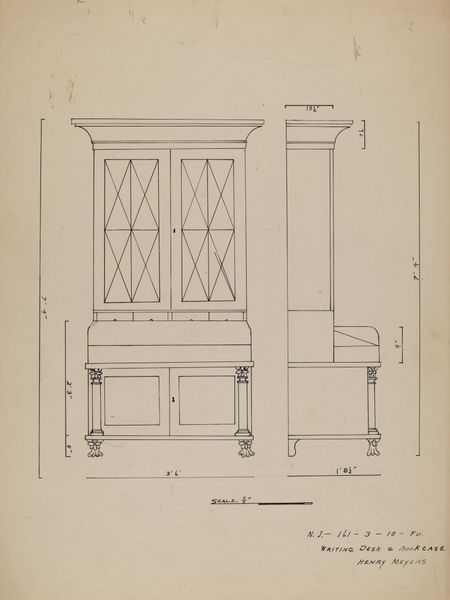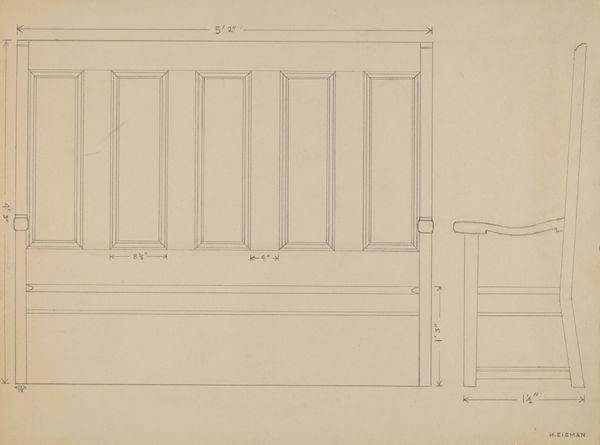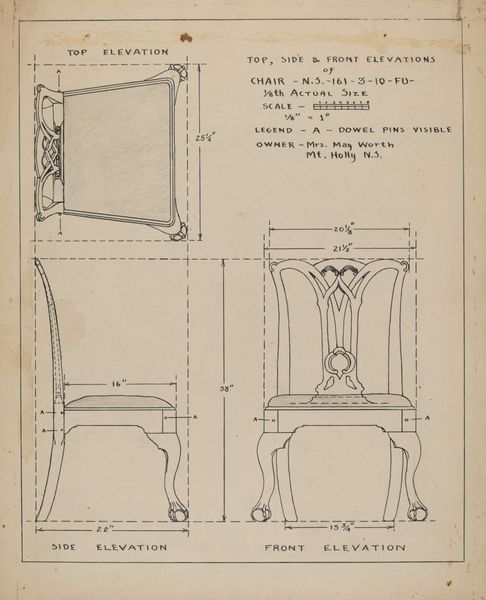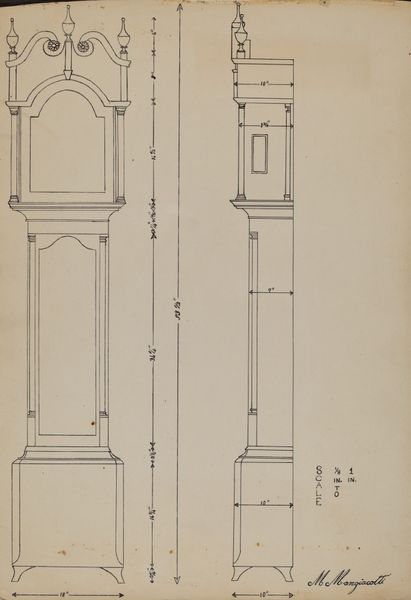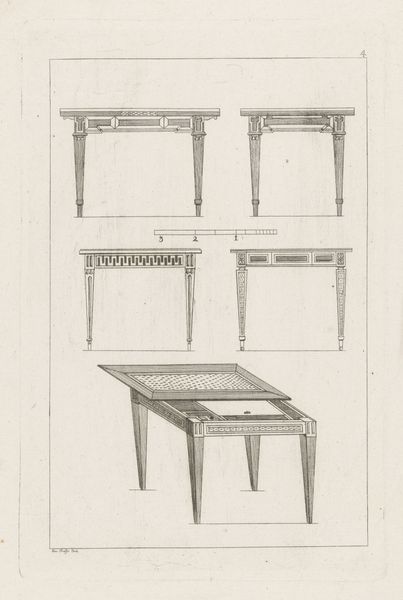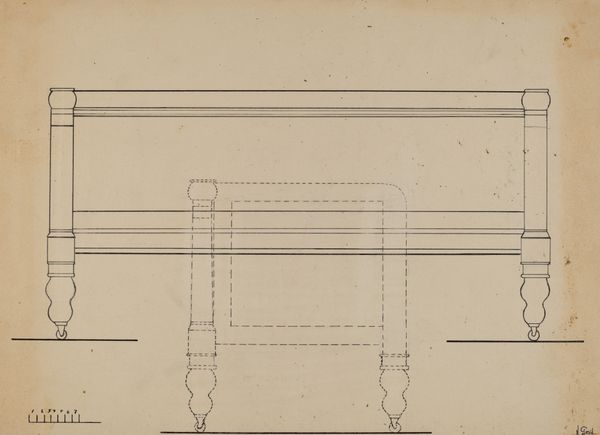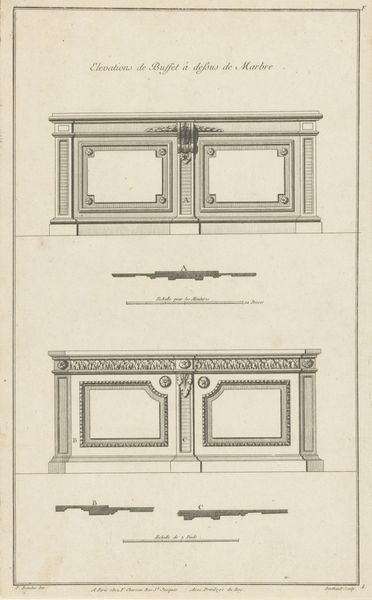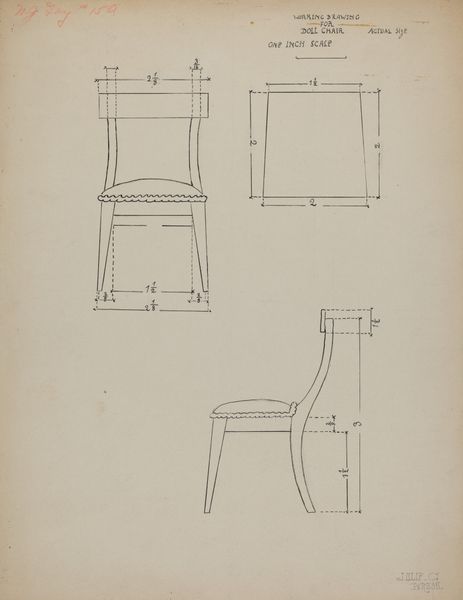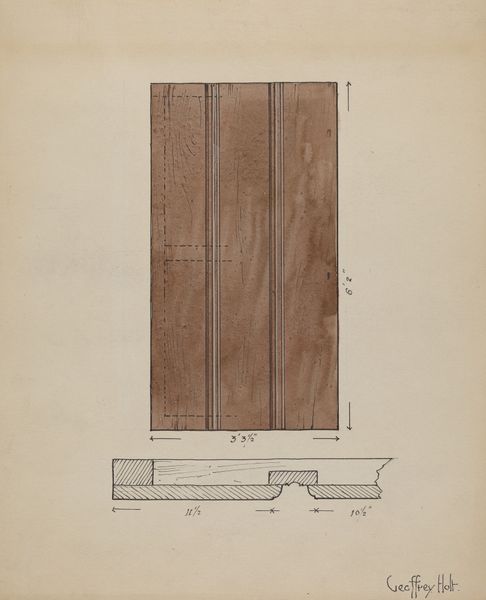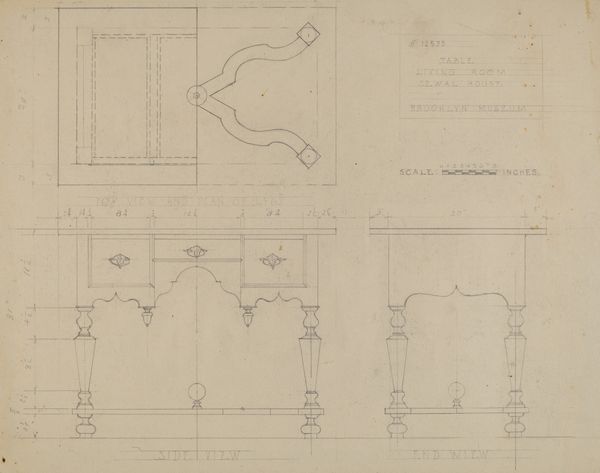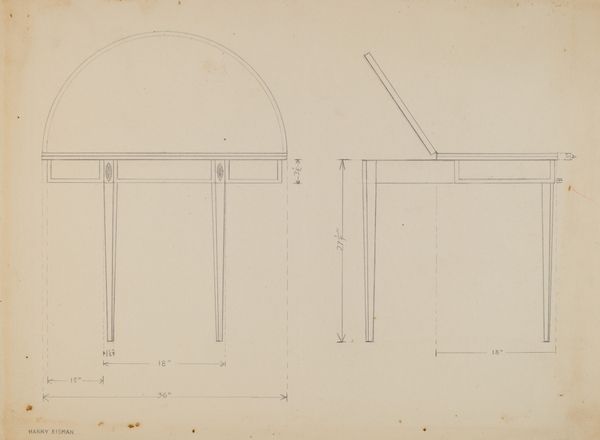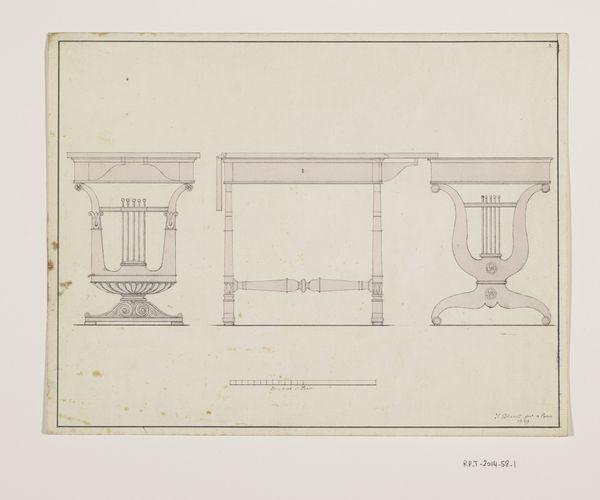
drawing, paper
#
drawing
#
paper
#
geometric
#
line
#
cityscape
Dimensions: overall: 27 x 20.9 cm (10 5/8 x 8 1/4 in.)
Copyright: National Gallery of Art: CC0 1.0
Curator: This intriguing drawing, "Plan for Rendering," dates to around 1953. It’s rendered in ink on paper. What are your first thoughts on seeing this piece? Editor: The precision is striking. It gives off the feeling of a meticulously planned and constructed world. Almost utopian in its clarity. Curator: It’s definitely meant to be functional. We see a carefully drafted design for a piece of furniture, likely a secretary desk. Consider the work that went into producing this piece—from the sourcing of the paper and ink to the labor involved in drafting it, presumably as a precursor to the craft of woodworking itself. It really exemplifies a pre-digital approach to design and manufacturing. Editor: Exactly, and it’s fascinating to consider how these drawings functioned within the broader social landscape of the mid-20th century. These kinds of designs, how were they circulated? Were they exclusive designs for a specific client, or intended for mass production? Was the process of their design tied to schools or collective workspaces, and if so, what impact does this have? Curator: Those questions all underline the intersection of art, industry and access in mid-century design. The level of detail gives it away; I suspect that it was a craftsman showcasing skills rather than preparing instruction for larger production. This pushes us to question how we classify what constitutes "art," particularly when it blurs the lines between functional objects and items of visual display and how value systems inform our taste for high art or something functional. Editor: Yes! The history of design, much like any creative endeavor, involves an entire complex structure. The social status of its commissioners or intended demographic affects its status. Curator: What I appreciate most is how something seemingly mundane can trigger such expansive reflection on material production, class structures and power dynamics within society! Editor: And that exploration leads to so much more appreciation for these objects that have outlasted the conditions of their making. Thank you.
Comments
No comments
Be the first to comment and join the conversation on the ultimate creative platform.
